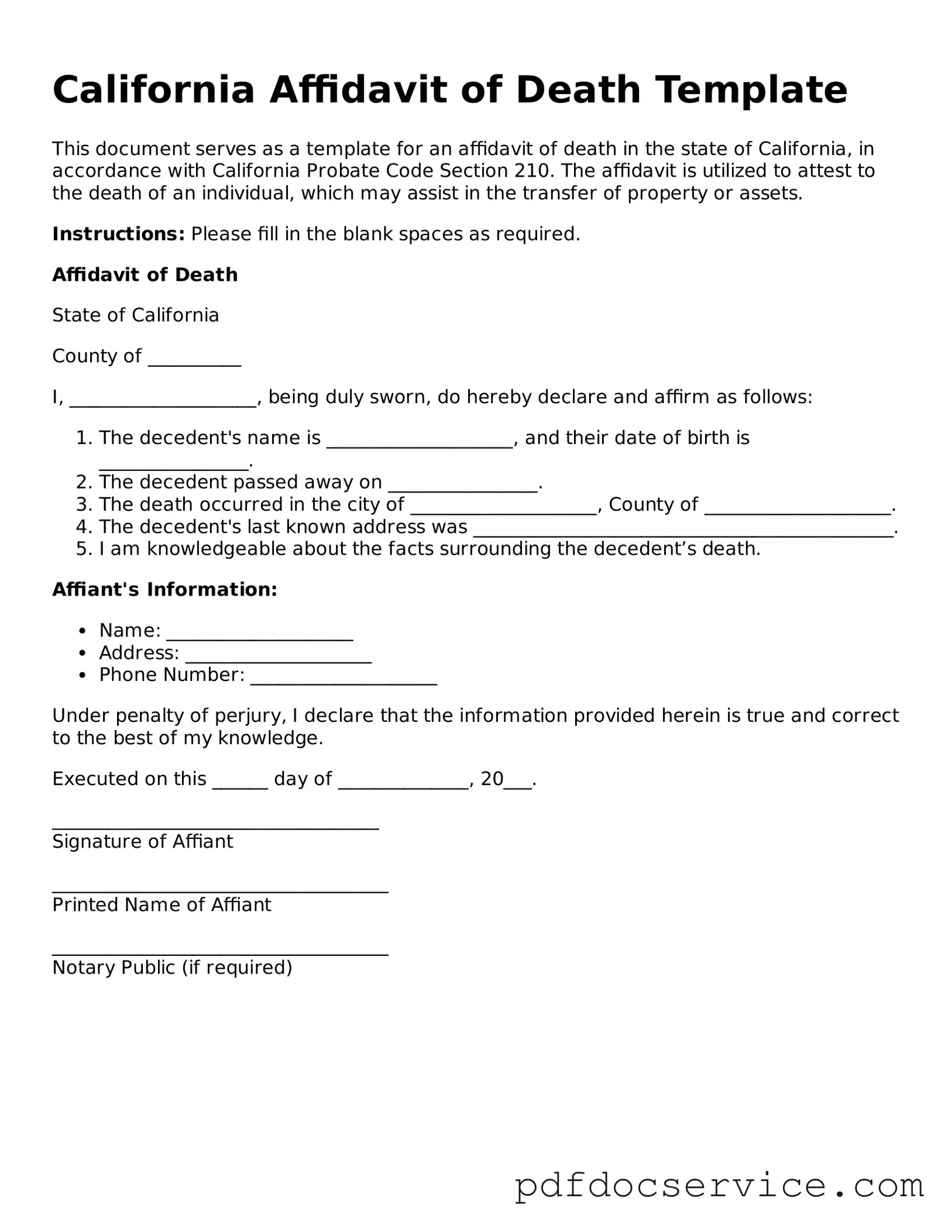Printable Affidavit of Death Template for California
The California Affidavit of Death form is a legal document used to officially declare the death of an individual. This form serves as a crucial tool for settling the deceased's affairs, including transferring property and settling debts. Understanding its purpose and proper use can simplify the process during a difficult time.
Open Affidavit of Death Editor
